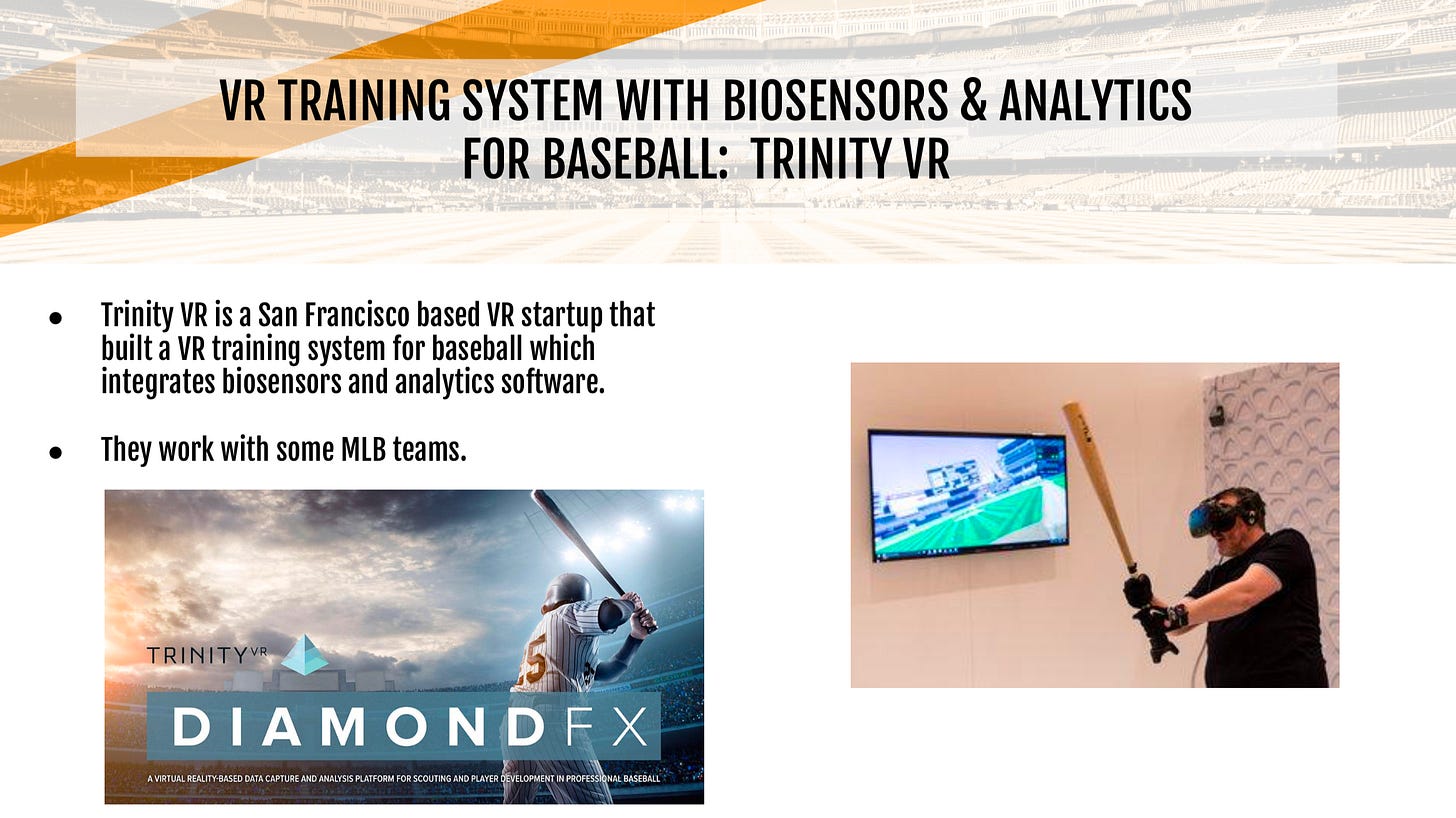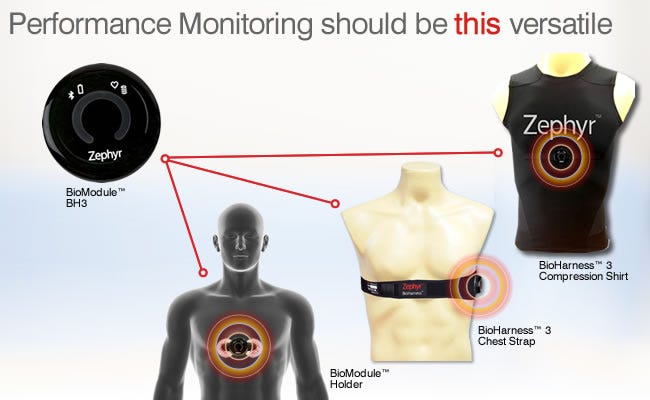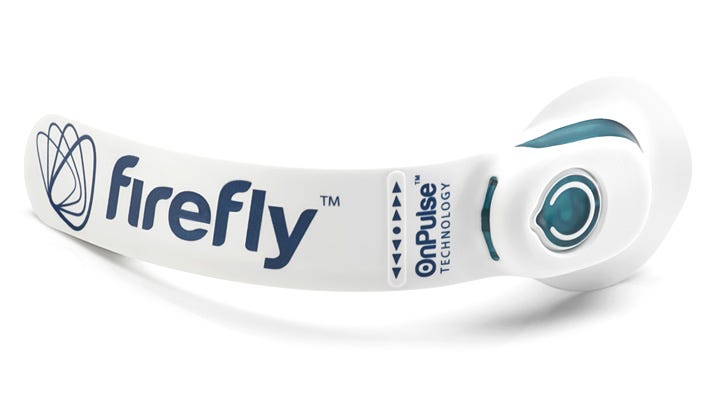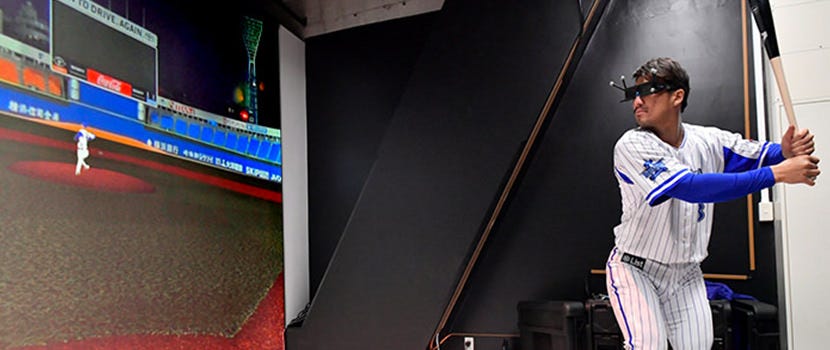From VR to advanced wearables
Baseball is one of the most popular sports in the world. But it is also one of the fastest growing sports in the world. Currently, it is estimated that 3M+ children play only in the US, and ~10M around the world!
Baseball leagues like the Major League Baseball (MLB) have also become one of the early adopters of emerging technologies. In fact, while some pro leagues like the NBA still do not allow the use of wearables during live NBA games, this is not the case of the MLB.
Back in 2016, the MLB approved its first two wearables for use in live games. Those were the Motus Sleeve, a wearable solution comprised of a biomechanics compression sleeve and a bat sensor. This solution essentially enablers coaches to measure the workflow, the stress on the UCL, and ultimately help prevent arm injuries.
Video: Motus
The second wearable device allowed in the MLB is the the Zephyr bioharness, which measures heart rate and breathing, and can thus be used as a proxy for monitoring fatigue.
Since 2016, two other wearables have been approved by the MLB during live MLB games. Those include the GPS tracker from Catapult which measures players’ GPS/location, workload and more.
The 4th wearable that has been approved by the MLB is the WHOOP strap, a wearable band that can measure players’ HR, HRV, temperature, and sleep data.
It is worth pointing out that MLB teams are not currently allowed to access the data from those wearables during live games. However they can access the data immediately afterwards.
One should also mention that there are 4 other devices that have been approved by the MLB for on-field activity (training..) outside of live games. Those include bat sensors from Blast Motion and Diamond Kinetics used to track swings.
Video: Blast Motion
Interestingly enough, the Blast Motion external bat sensor can be used for swing tracking in-game at all minor league levels, with the Blast Motion embedded bat sensor approved for in-game use in complex leagues.
For off-field use there are a myriad of other devices and wearables technologies used by baseball teams today. The goal here is not to go over every single technologies out there but talk about the ones that we believe have the most potential and are the most innovative in the world of baseball.
In the world of injury prevention, many pro teams use compression boots from companies like Normatec to help improve blood circulation and recovery. However, there are other technologies that can provide the same benefits than compression boots and for a much lower price. Firefly Sports Recovery Device is one of them as it helps improve blood flow and circulation. It is essentially using neuromuscular electrostimulation. The Firefly sits at the top of players’ calf.
Here is a quick video that shows how Firefly works.
Video: Firefly
In baseball, concentration and focus are other key factors that help maximize the performance of baseball players. This is where a neurotech company like Halo Neuroscience is playing a key role. This Californian startup created a headband which uses transcranial direct current stimulation that can help baseball players be more focused while training in the gym. It can also influence brain activity through neurostimulation, and may even be useful in treating certain conditions or injuries. As shown in the video below, MLB teams like the SF Giants are among the teams that have been using the technology.
Video: Halo Neuroscience, SF Giants (MLB).
VR training systems have also become key technologies that have helped pro baseball teams better prepare against teams. One of the key VR startups focusing on this area is WIN Reality, previously known as EON Sports. One of the top MLB teams using their VR training system is the NY Mets.
The NY Mets have been using it as part of their hitters’ daily routine. The whole idea here is for a hitter being able to face a pitcher before having to face that pitcher.
“It’s an advanced visualization tool, because you’re programming your mind ahead of time to what that guy might do to you,” NY Mets’s hitting coach Chili Davis said. “If you use it the right way, I think there’s a lot of benefit to it. It’s sort of the next level of looking at video.”
The simulation shows a pitcher’s delivery and arm slot, as well as the trajectory of the ball — all key variables as a hitter reads a pitch and decides to swing. For now, at least, the VR isn’t good enough to show how a ball spins or its seams, which are also important real-life tells, but the technology seems to be improving quickly.
“Last year with the Cubs, I saw it with a shadow image of the pitcher,” said Davis, who lamented that the closest thing he had to virtual reality in his 19-year big-league career was closing his eyes and visualizing the pitcher. “The motion matched the pitcher’s motion, but the pitcher himself, you didn’t see him or his jersey. Now, you’re seeing the pitcher.”
Said Chris O’Dowd, chief executive officer of WIN Reality: “The opportunities to increase the realism are there. We know beyond anything that the more realistic the experience is, the more relatable and transferrable it will be for players.”
Video: WIN Reality
WIN Reality is not the only player in town in the VR training space. Another key player is Trinity VR, which is going one step further by integrating players’ live biometric data (e.g. speed of swing, HR, etc.) into the training systems. As illustrated in the picture below, by doing so baseball players and coaches can get real time feedback of the quality, speed of their swing.
 Source: Trinity VR, Sports Tech Advisors, 2019.
Source: Trinity VR, Sports Tech Advisors, 2019.
Bottom line: We expect the world of pro baseball (e.g. MLB) to continue to be an early adopter of emerging technologies. We also believe that the MLB will approve new wearable technologies during live MLB games and could possibly allow teams to get the data in real time to make real time decisions, and know when players are getting fatigued. Ultimately this will help them better prevent injuries and win more games. We also expect to see the emergence of new types of training systems based on emerging technologies like Mixed Reality (MR) and leveraging the live biometric data.







Leave A Comment
You must be logged in to post a comment.